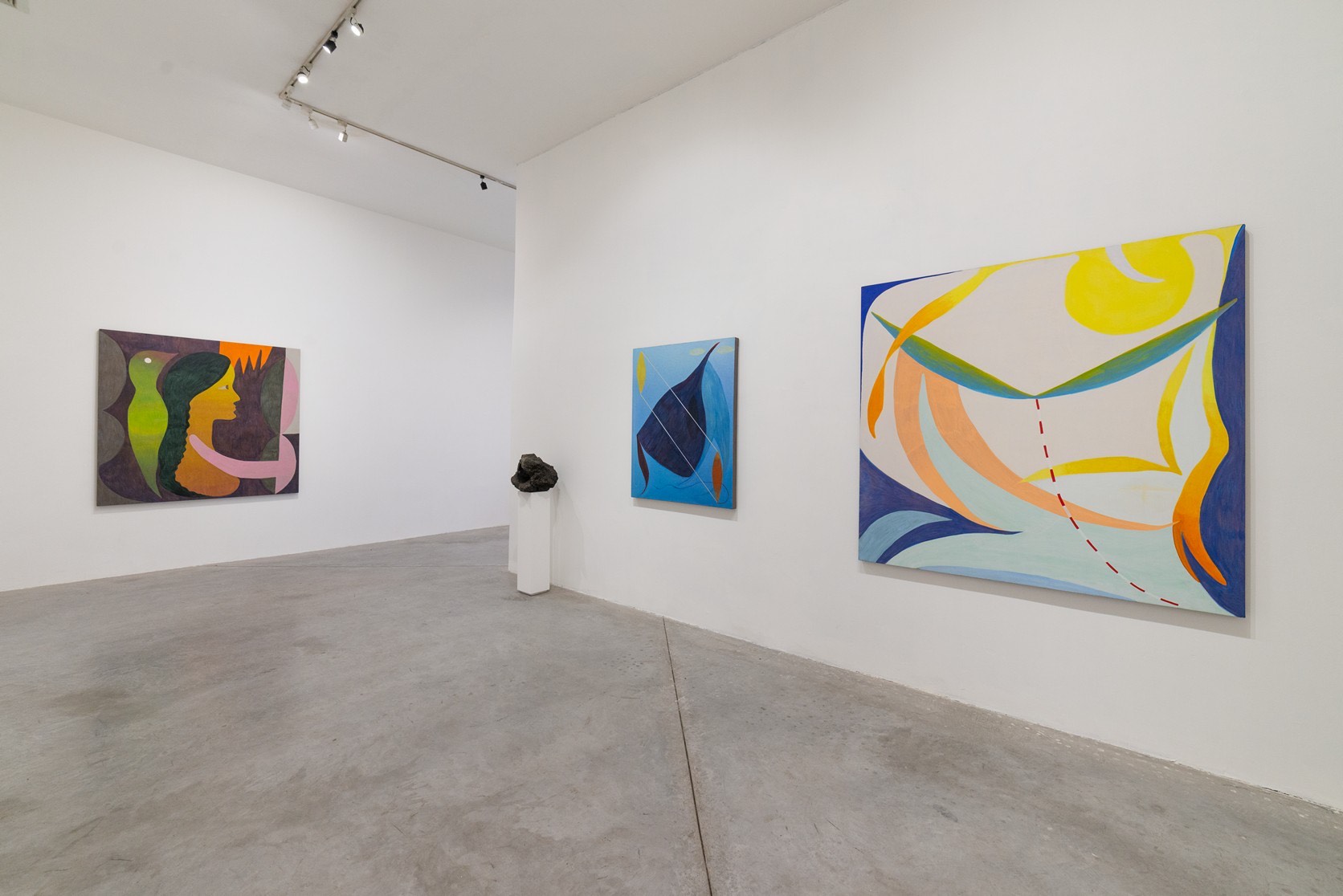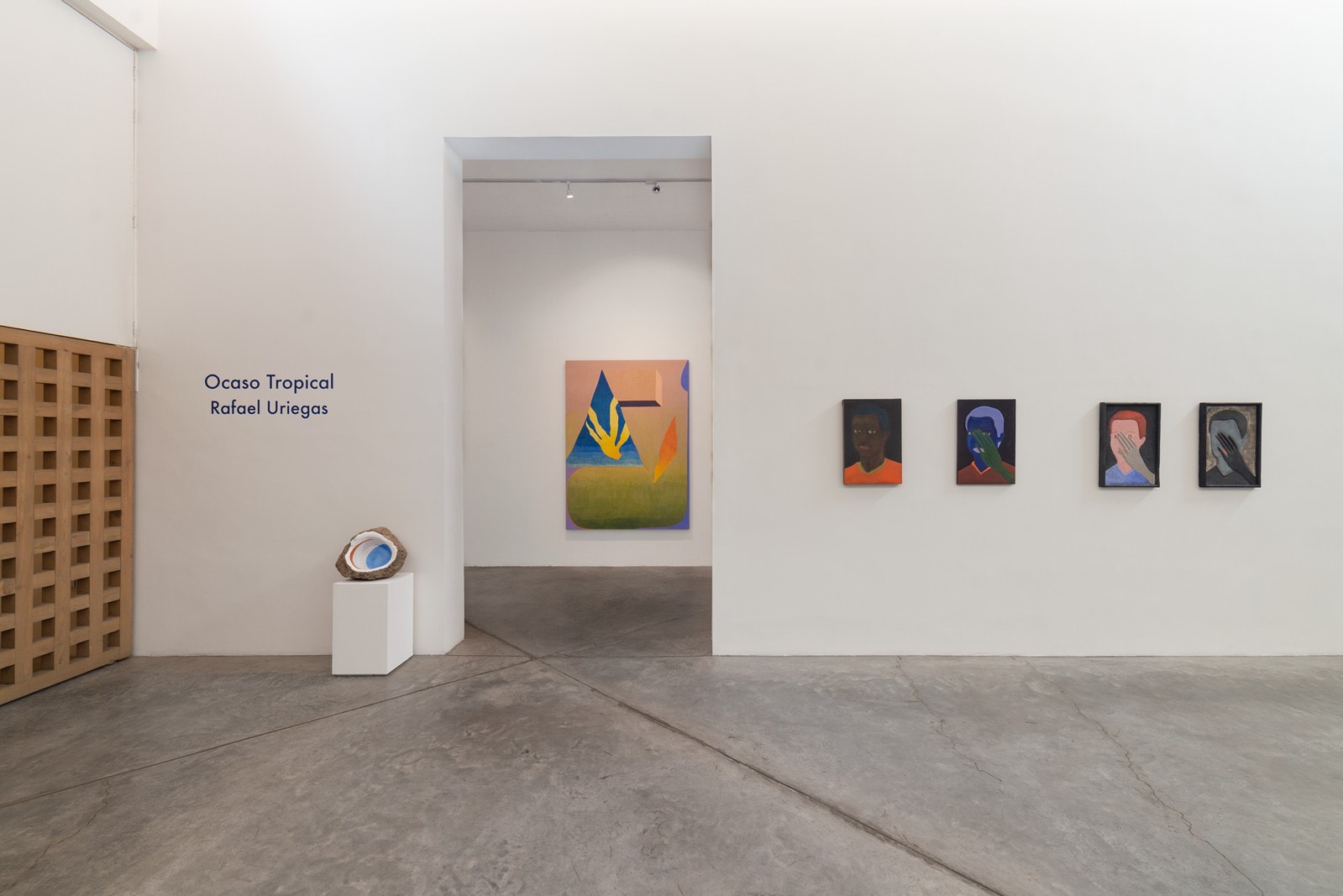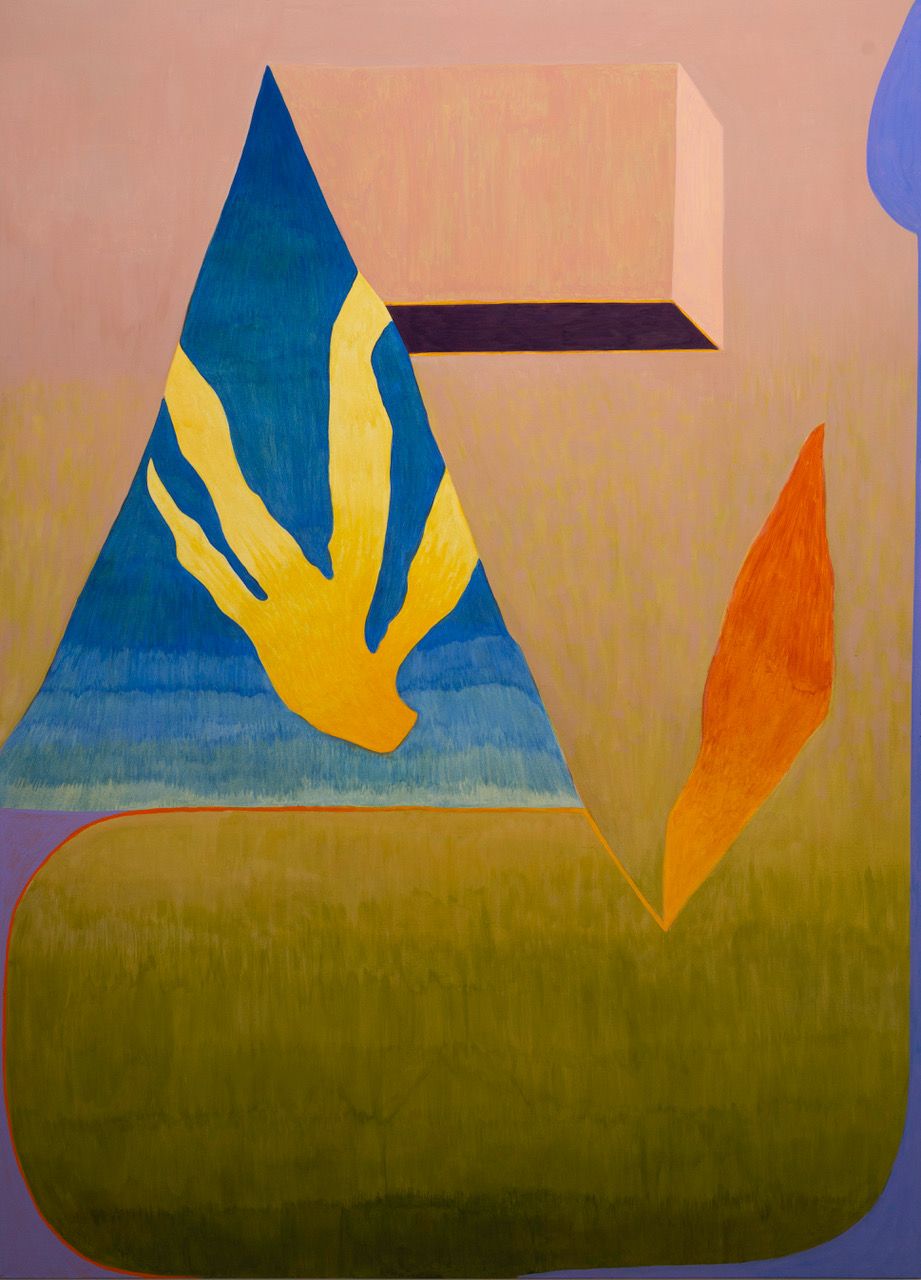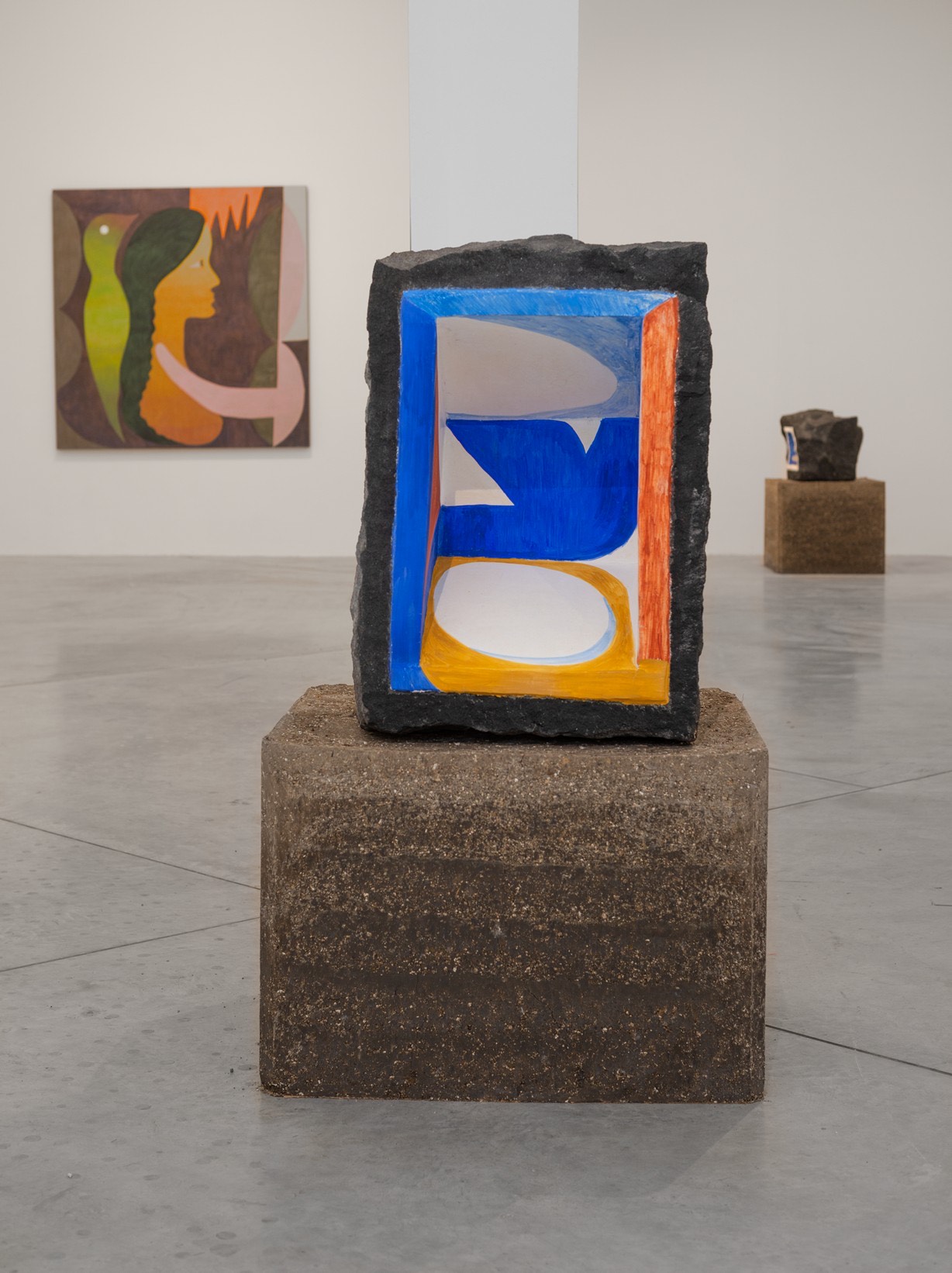
Review
Ocaso Tropical. Rafael Uriegas at the Galería de Arte Mexicano
by Julián Madero Islas
Reading time
4 min
There is something in Ocaso Tropical [Tropical Dusk], Rafael Uriegas' current exhibition at the Galería de Arte Mexicano, that Enrique Giner's curatorship highlights: the relationship between painting and space. Painting inhabits space, but it also replicates and transforms it; it accompanies the transit of those who walk through it. Here, the curatorship is an edition, a sequence of spaces and moments.¹
In recent years, Uriegas has turned his practice towards murals—playing a significant role with his frescoes in architectural ensembles and public spaces where color is a key element. However, his work on canvas has not been interrupted. There is a nourishing dialogue in which painting and design feed each other. As I walk through the exhibition room, I find that I can inhabit the pieces, and the question arises: how does the space breathe in them?

The artist shares an observation with me. As part of his mural practice, influenced by travels and conversations, he recognizes the different sensitivity to color that manifests in various latitudes. He compares and contrasts the "violent" saturation of the tropical palette with the more subdued, grayish tones of Anglo-Saxon paintings. I agree that sometimes knowing the geography of a place is enough to recognize the specificity of its painting. For now, I retain the essential: a kind of code in which saturation denotes a violence regulated by the sobriety of the land.

Despite globalization, of which artistic production is a part, the geographical and cultural environment imposes itself. Landscapes, clothes, and manners change in proportion to the environmental temperature. Juan Acha referred to aesthetic culture with the term eco-aesthetics, emphasizing not only the environment but also the popular uses of color and space, music, dance, and poetry. Uriegas' painting is inscribed in a tropical eco-aesthetics that dusks: before setting, the sun lights up red-hot.
The color withstands—the grays containing, the saturated colors radiating—a whole mechanics of forces. I asked how space breathes in these pieces because something very particular happens in them. The color, more than dying, floods everything: the space expands, extends, and suspends, like rubber bands stretched in a boxing ring. The forces rise and fall; it is inevitable to hear the timbres, the silences. There are planes that are like esplanades in the sun and others like cenotes in the shade. The signs acquire weight in their chromatic relationship. The space breathes in and out.
The core of an apple
a bird cuts the sky
sun seed
yellow yolk
puddles of water on a board
they draw stalactites
pistils
and family nuclei.

I stop in front of the stone sculptures. Although I’d say they may seem like another issue, they are the enclave between the architectural and the pictorial. They are also the bridge between Basque sculpture and tropical modernity. Contents and containers. I can only liken the secret of these stones to the transparent freshness contained in the rind of a lychee. In these house-stones, the pictorial plane unfolds: it envelops and contains. The architectural space becomes mental.
...I am becoming smaller,
I am a point that disappears and returns
and I fit whole in the tokonoma.
I become invisible
and on the other side I recover my body
swimming on a beach...²

It is true that the paintings of Rafael Uriegas play suggestively with our spatial perception, but not as an illusion or trompe l'oeil effect, they modulate space as music modulates time: lengthening, pausing, pacing. I return from there as if thrown from a vacation reverie, from the taste of fresh water and the rest in the lithic cavity.
Translated to English by Luis Sokol
1: The reference to the book as a sequence of spaces and moments comes from Ulises Carrión.
2: José Lezama Lima, fragment of “El pabellón de la vacuidad” (https://materialdelectura.unam.mx/poesia-moderna/16-poesia-moderna-cat/26-005-jose-lezama-lima?start=10). I’d like to thank Octavio Gómez Rivero for introducing this poem to me.
Published on June 21 2024